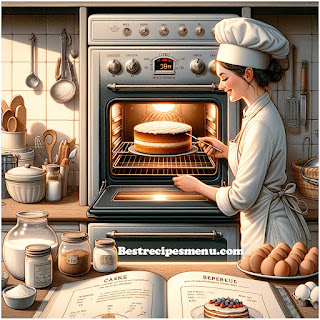Introduction to Cake Baking
Embark on a culinary journey where precision meets creativity: the art of cake baking. This intricate dance of ingredients hinges largely on one key variable – the baking temperature. Our exploration today delves into unearthing the perfect thermal settings for various cake genres, a quest to elevate your baking from mere routine to a triumphant gastronomic feat.
Understanding the Basics of Cake Baking
Role of Ingredients
Each ingredient in a cake sings its own tune. Flour, the backbone, grants structure; eggs, the harmonizers, unify the ensemble; sugar sweetens the melody, and fats like butter infuse soulful flavor and tenderness. The right temperature is the maestro, ensuring these elements orchestrate in perfect harmony.
The Science Behind Baking
Baking – a symphony of chemical reactions. Heat coaxes proteins in flour and eggs into a delicate embrace, whilst conjuring steam that buoyantly lifts the cake. Achieving the ideal temperature is akin to hitting the perfect pitch – essential for these reactions to play out in sublime balance.
Exploring Ideal Baking Temperatures
General Guidelines for Cake Temperatures
The spectrum for most cake endeavors spans from 325°F to 350°F. This range, not too tepid nor too torrid, is the crucible for even baking and the birth of a golden crust.
Variations for Different Types of Cakes
Dense, introspective pound cakes flourish under the gentle warmth of 325°F, whilst the more vivacious, airy sponge cakes thrive in the slightly more fervent embrace of up to 350°F.
Tips for Perfect Cake`s Baking`s
Preheating the Oven
Commence each baking saga with a preheated oven - a sanctuary of consistent warmth for at least 20 minutes, safeguarding your cake's ascent from batter to masterpiece.
Using an Oven Thermometers
In the realm of baking, trust but verify. Oven temperatures, often capricious, necessitate the vigilance of an oven thermometer, the faithful sentinel of accuracy.
Adjusting for Altitude
Elevation introduces a twist – the need for a slight temperature elevation to compensate for the whims of water's boiling point at lofty altitudes.
Common Baking Mistakes and How to Avoid Them
Incorrect Temperature Settings
A misstep in temperature can be the Achilles heel – an oven set too zealously or too timidly leads to a myriad of baking disappointments. Adherence to the recipe's thermal guidance is paramount.
Opening the Oven Frequently
The allure to peek is strong, yet each oven door ajar is a gust of precious heat lost, a potential harbinger of uneven baking.
Advanced Baking Techniques
Adjusting Temperatures for Moisture and Texture
Venture into the alchemy of baking - minor tweaks in temperature can be transformative, endowing your cake with the desired moisture and texture.
Experimenting with Baking`s Time`s
The delicate interplay of time and temperature is often the unsung hero of baking. An observant eye on the baking process can be as crucial as the oven's dial.
Conclusion
Baking is a dynamic experiment peppered with variables and personal nuances. The 'ideal' temperature is often a personal discovery, a testament to the baker's adaptability and ingenuity. Embrace experimentation, and let each baking journey be a narrative of delicious exploration.
FAQs
What temperatures should I bake a chocolate cake at?
- Hold back nothing spot of 350°F for a chocolate cake that sings with wealth.
Can I bake two cakes at the same time?
- Yes, but introduce them to a dance of rotation midway for an even bake.
Why did my cake sink in the middle?
- This could be a tale of premature extraction or an oven's overzealous heat.
How long should I preheat my oven?
- Gift your oven 20 minutes to don its cloak of consistent warmth.
Does fan-assisted baking change the temperature?
- Indeed, in the whirl of fan-assisted baking, dial down the temperature by 25°F.






0 Comments